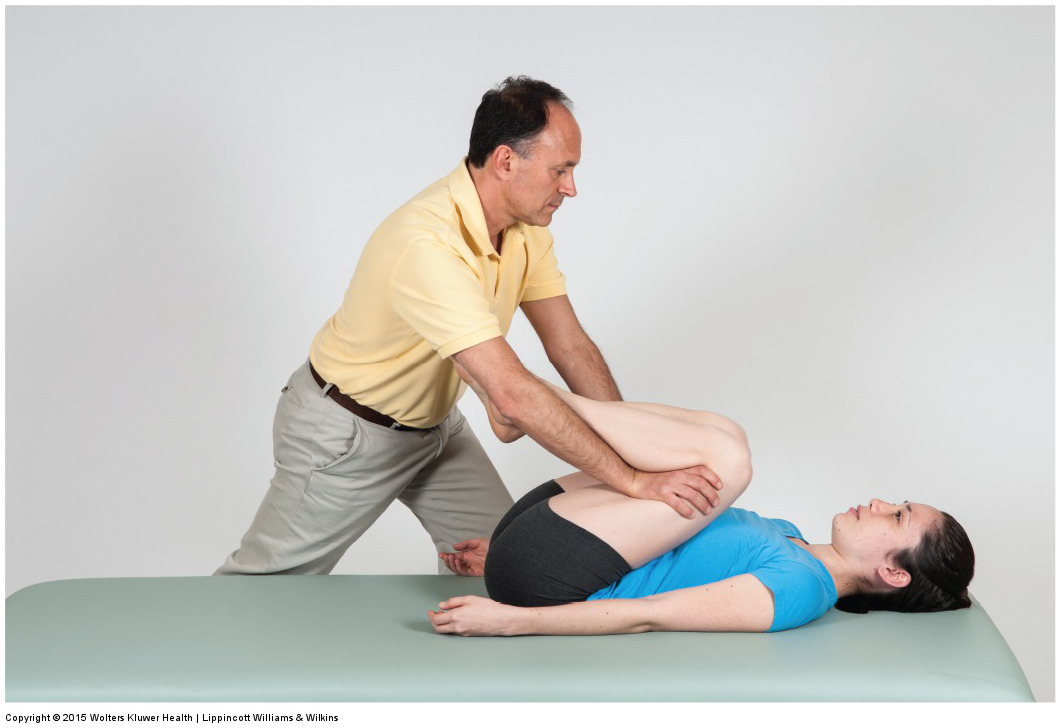Manual therapy treatment for sciatica

Double knee to chest stretch for the posterior paraspinal musculature. Permission: Joseph E. Muscolino. Permission: Joseph E. Muscolino. Manual Therapy for the Low Back and Pelvis – A Clinical Orthopedic Approach (2015).
It is difficult to state what manual therapy treatment techniques will necessarily be beneficial for sciatica because, as stated, sciatica describes the symptom (compression of the sciatic nerve), not the underlying mechanism of the condition itself. Therefore, it is necessary to determine what condition is causing the sciatic nerve compression and address that. If the cause is a pathologic disc, then addressing factors that affect disc compression is appropriate. If the cause is osteoarthritis/degenerative joint disease, then addressing this condition is required. And, of course, if the cause is piriformis syndrome, then the piriformis needs to be treated.
Once determined, the tools that are at the disposal of the manual therapist are essentially soft tissue manipulation (massage), hydrotherapy (hot and cold), stretching, and joint mobilization (arthrofascial stretching).
Summary of Manual Therapy Treatment Protocol for Sciatica
| The cause of sciatica must be determined and treatment directed at the cause. |
Precautions/contraindications for sciatica
The precautions and contraindications for treating sciatica depend on the treatment performed, which in turn depends on the underlying cause of the sciatica. For treatment of pathologic disc, osteoarthritis, or piriformis syndrome, please refer to those blog posts. But anytime that nerve compression is present, what is most important is to avoid any therapy that would increase the compression.
Self-care for the client/patient with sciatica
Self-care for sciatica depends on the underlying cause of the condition. As a rule, the client/patient should avoid prolonged sitting and/or standing. For more specific self-care guidelines, see Self-care in the blog posts for pathologic disc, osteoarthritis, or piriformis syndrome.
Medical approach to sciatica
Sciatica is a potentially serious condition because it involves neural compression that can result in death of neurons with consequent permanent sensory and/or motor loss. Therefore, it is wise to refer clients/patients with sciatica to a physician for a definitive diagnosis, especially if conservative manual therapy is not working to improve the client’s/patient’s condition. However, referral does not mean that the manual therapist cannot provide adjunctive care along with the care of the physician. Allopathic treatment typically includes oral steroidal anti-inflammatory (cortisone) medication, as well as cortisone injection into the gluteal region. Depending on the cause of the sciatica, surgery might also be an option.


